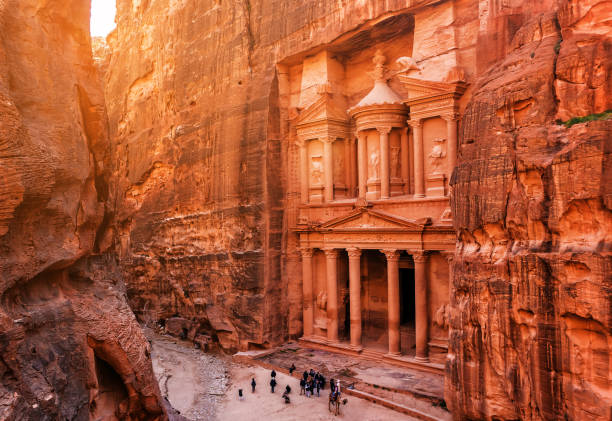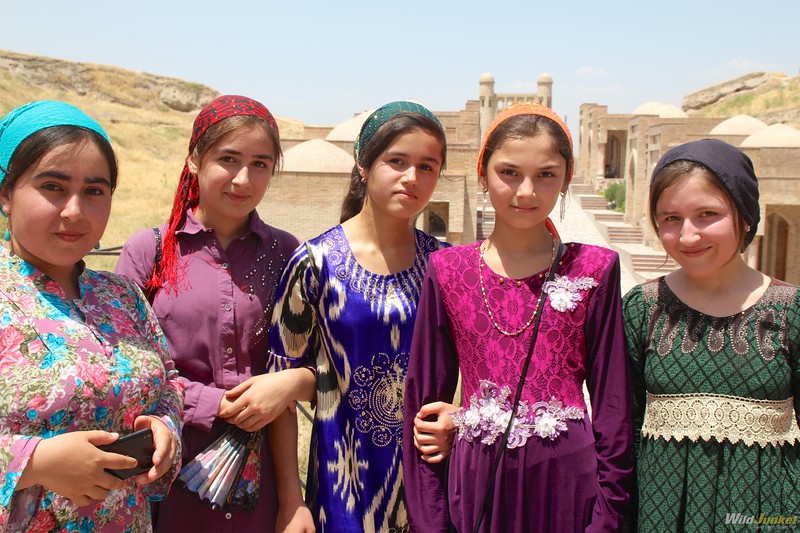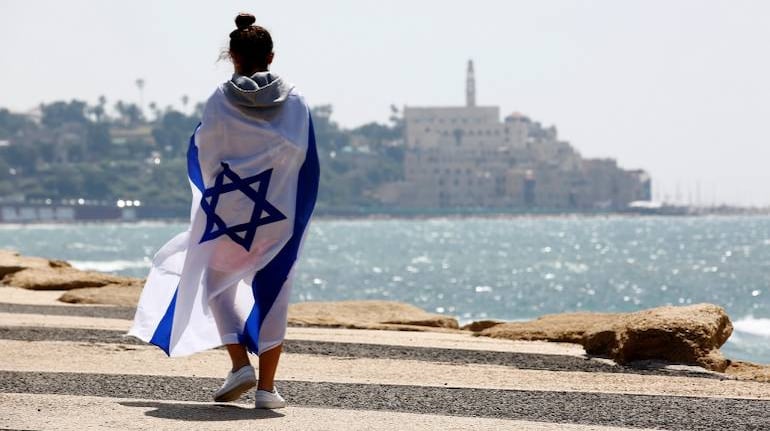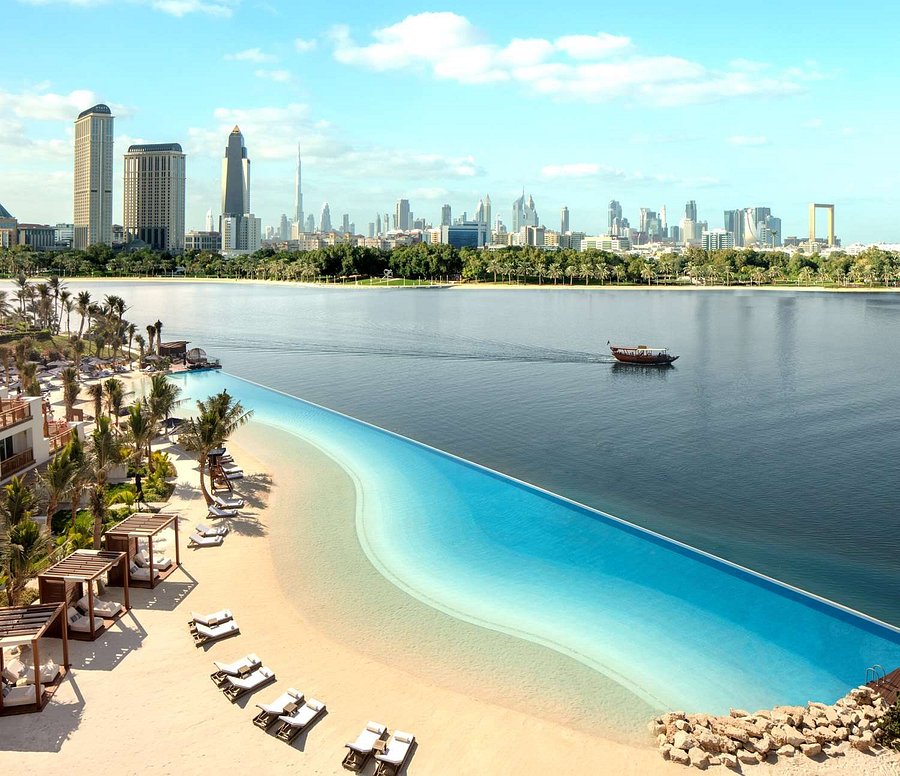Travel to Petra, Jordan
A Journey Through Petra’s Ancient Monuments, Trails, and Rock-Carved Wonders
Petra is one of those rare places where history and landscape blend so deeply that you can’t tell where the human story ends and nature begins. Hidden within red sandstone canyons in southern Jordan, the ancient Nabataean city feels like a dream carved into rock — silent, majestic, and full of secrets. It’s a place shaped over centuries, forgotten for nearly a thousand years, and rediscovered in the 19th century as if it were waiting under the desert dust.
Entering Petra: Tombs, Canyons, and the First Glimpse of the Treasury
Your walk into Petra begins long before reaching its famous landmarks. Just past the visitor entrance stands the Obelisk Tomb, an early clue that Petra is unlike any ancient site in the world — a façade blending Egyptian influences with Nabataean creativity. It’s the kind of structure that makes you pause before continuing deeper into the valley.
From there, the path gradually narrows until you enter The Siq, a long, winding canyon with towering sandstone walls that twist like sculpted ribbons overhead. Light slips through in thin beams, reflecting shades of orange, pink, and red. This dramatic natural corridor builds anticipation with every step.
And then it appears — the first glimpse of The Treasury (Al Khazneh), framed perfectly at the end of the Siq. Standing before it is overwhelming: a massive, immaculate façade carved entirely from the rock face, with elegant columns, statues, and Hellenistic details that show the sophistication of Nabataean engineering. No matter how many times you’ve seen photos, the real sight feels unreal.
The path continues beyond the Treasury into the Street of Facades, a stretch lined with rock-cut tombs that rise above you like an ancient skyline. Further down is The Theater, carved directly into the mountain rather than built from stone blocks — a reminder that the Nabataeans reshaped entire cliffs to match their needs.
Soon you reach the Central Area where ancient marketplaces, temples, and the remnants of bustling city life once filled the valley. The Byzantine Church sits here as well, famous for its richly colored mosaic frescoes preserved from the 5th and 6th centuries — pieces of art that survived fires and earthquakes.
Nearby stands Qasr al-Bint, one of Petra’s main free-standing temples and a structure that once dominated religious life in the city.
Climbing the Monastery Trail and Exploring Petra’s Upper Kingdom
Beyond the central valley, trails wind upward into the mountains. One of the most rewarding is the climb to The Monastery (Ad-Deir), a massive rock-cut building larger but simpler than the Treasury. The path includes long stairways, narrow passages, and stunning viewpoints. When you reach the top, the Monastery sits quietly against the backdrop of open desert — calm, monumental, and deeply impressive.
Other notable trails explore Petra’s “upper level,” starting with the clusters of Royal Tombs carved high into the cliff walls. The Urn Tomb, with its tall interior chambers and dramatic courtyard, is among the most striking. Walking along this area brings you again beside the eastern side of the Street of Facades, creating a loop that shows how Petra was structured both horizontally and vertically.
The High Place of Sacrifice Trail is one of Petra’s most atmospheric routes. Along the way you pass the Garden Triclinium, ceremonial spaces, quiet ledges, and overlooks where the city stretches out below like a carved labyrinth. Reaching the High Place of Sacrifice itself gives you one of the oldest ritual places in the city — a sacred plateau used for ceremonies and worship.
For breathtaking views of the Treasury from above, the Al-Khubtha Trail winds its way across ridges and ledges until you reach a lookout where the famous façade appears far below, perfectly framed by cliffs.
Another demanding but rewarding route is the Umm al-Biyara Trail, one of Petra’s highest peaks. At the top, you’ll find ancient water cisterns that once sustained people living in these highlands — practical, ingenious engineering in an unforgiving landscape.
Near the western edge of Petra, quiet paths lead toward the Crusader Castle at el-Habis, offering a very different layer of history. From the top, sweeping views spread across the desert and the city’s ruins.
Beyond Petra: Little Petra and the Wider Nabataean World
A short drive from the main site brings you to Little Petra (Siq al-Barid), a smaller but equally captivating cluster of carved façades, temples, and residences. It once served as a stopping point for traders and caravans arriving along the ancient spice routes. Little Petra has the same carved beauty as the main city but feels more intimate — a place where you can wander quietly through narrow passages without crowds.
Little Petra also hints at the larger network of Nabataean culture that once stretched across the region, linking Petra to the Arabian Peninsula and beyond.
Petra is more than a tourist destination. It’s a city that reveals its secrets slowly — through carvings, trails, tombs, viewpoints, and the silent presence of mountains shaped by time. Whether you explore its grand monuments or climb its hidden paths, Petra leaves an impression that stays long after you leave. The red stone remembers everything, and for a moment, you become part of its story.
Locations in the video: The Obelisk Tomb (0:01), The Siq (0:0), The Treasury (Al Khazneh, 1:41), Street of Facades (2:22), The Theater (2:51), Central Area (4:30), Frescoes from the Byzantine Church (5:02), Qasr al-Bint (5:26), Trail to the Monastery (5:44), The Monastery (Ad-Deir, 6:07), The Royal Tombs (8:03), Urn Tomb(8:26), again the Street of Facades - Estern side (8:44), High Place of Sacrifice Trail (9:50), Garden Triclinium (11:17), High Place of Sacrifice (12:00), High point view over the Treasury (12:26), Al Khubtha Trail 12:52), Umm al-Biyara Trail (14:23), Water cicterns on top of Umm al-Biyara (15:47), around the Crusader Castle at el-Habis (16:30), Little Petra (18:54).






